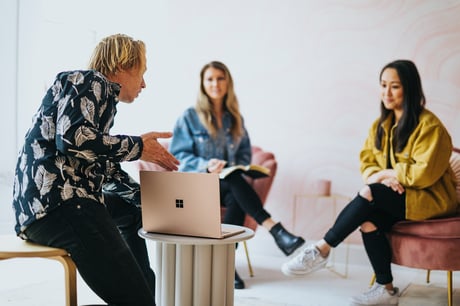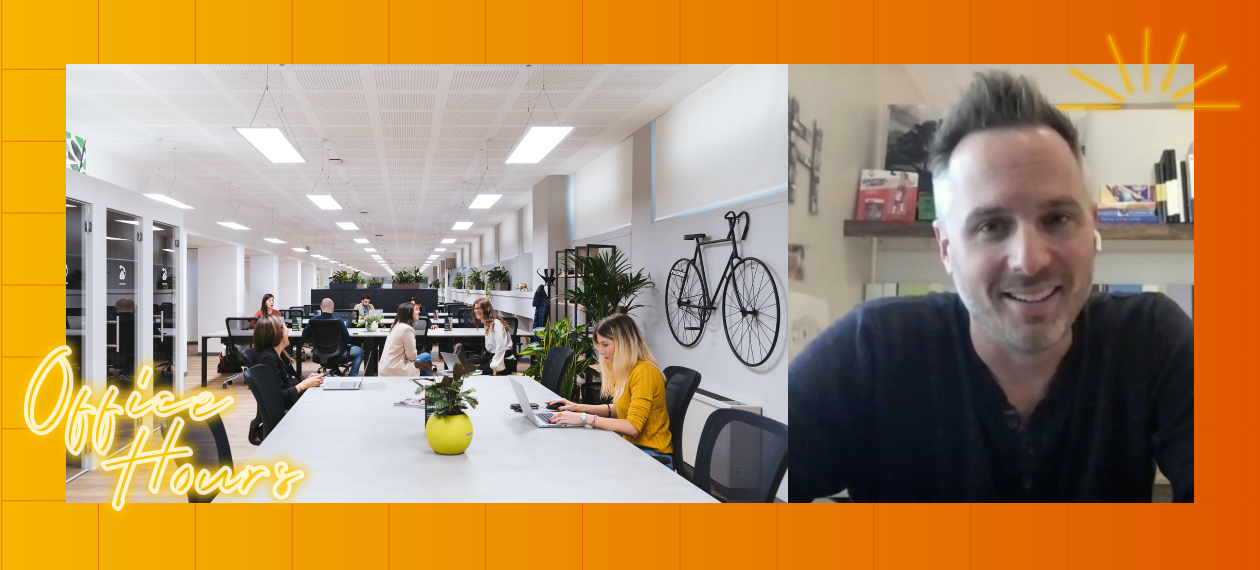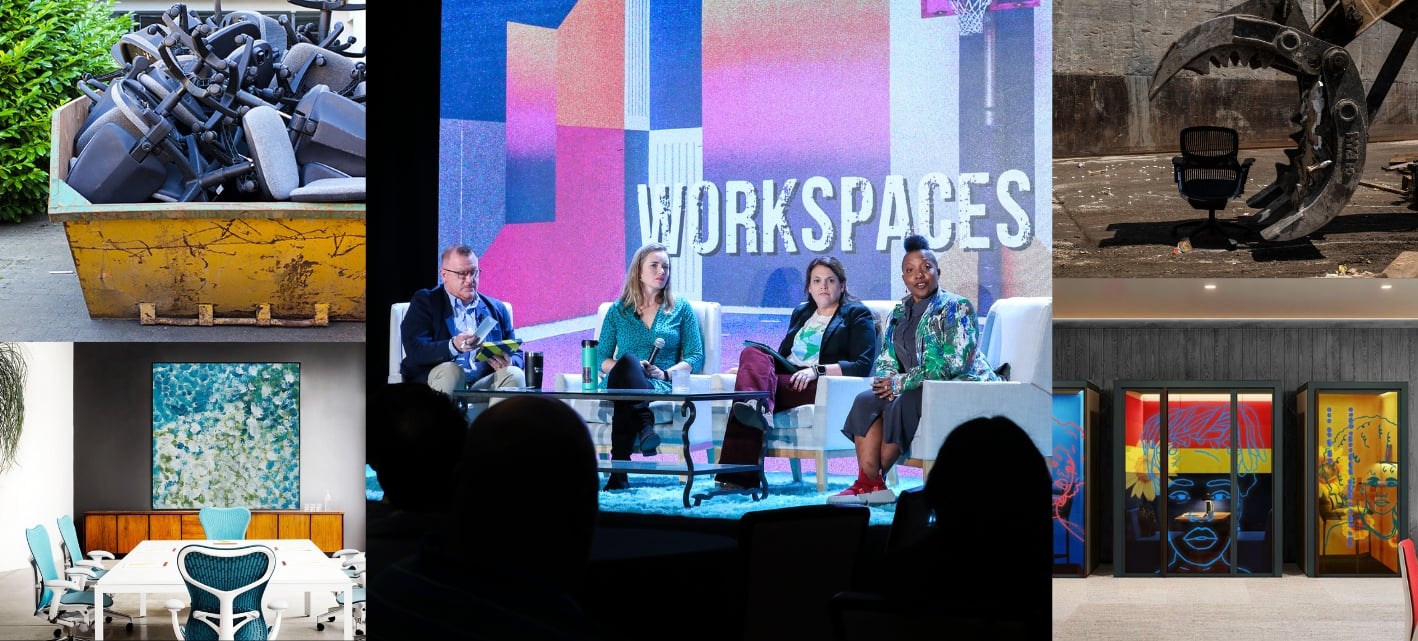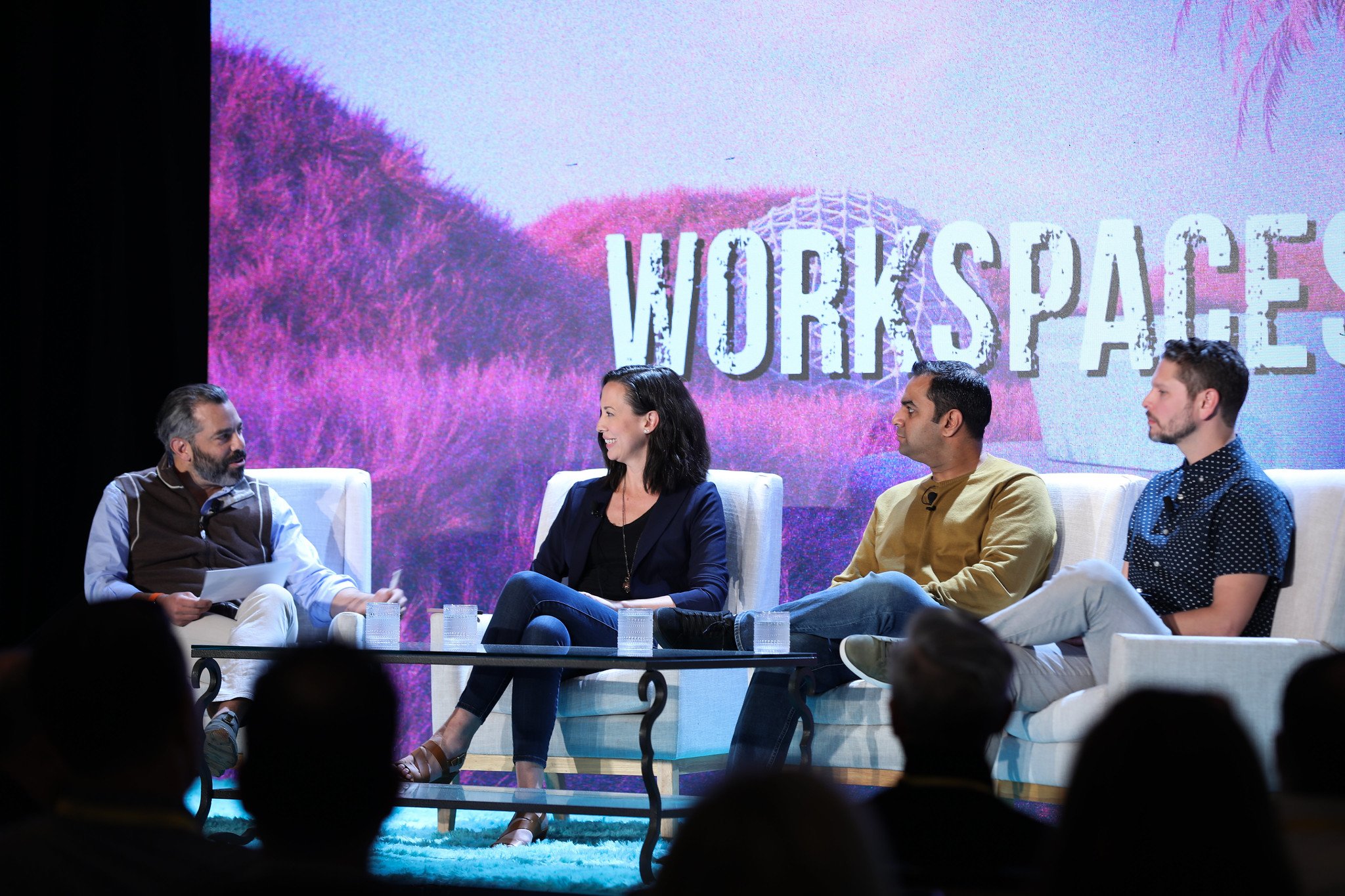Despite how quickly the nature of work is changing, for many, there’s one point of view on physical spaces that will always hold true: the strongest interpersonal relationships are developed, well, in person.
“It’s like sports,” said Brett Hautop, VP of Workplace for LinkedIn. “Going to a game in person is completely different than watching it on television or listening to it on the radio. It just doesn’t compare.”
In a recent episode of WorkSpaces’ webcast series, Office Hours, Hautop joined us to discuss how companies can bridge that gap between virtual and physical as they safely emerge from the pandemic. He took us through his vision of the workplace of the future, emphasizing why in-office experiences will remain important — while unpacking the ways offices have failed workers in the past, and how a well-designed hybrid work strategy can prime them for success.
Building Bonds
The physical office isn’t just a space to get work done; it’s a space to build and strengthen the sort of bonds essential to a healthy workplace. “We have a whole bunch of employees — a lot of people who we’ve hired since the pandemic — who’ve never even met one another, never been to an office and met their coworkers,” Hautop said.
Coworkers who’ve only ever known each other virtually have very different relationships than coworkers who’ve spent years in the same space, attending events and taking trips together. “You go through the hard times, you go through the good times, you’re always building and strengthening your bonds,” he said. “It just doesn’t happen in a remote setting.”
More Meaningful Ways to Engage
To build the future, companies will have to do much more than recreate the past. As Hautop explained, the challenge ahead is redesigning the experience of physical workplaces as well as the spaces themselves. Sitting in conference rooms for hours and hours, trying to finish a project in a noisy shared space — “none of those were ideal circumstances,” he said, “and it didn’t really work.”
To make the office more appealing to workers, designers will have to think outside the box. For Hautop, that means giving workers more meaningful ways to engage with each other. “Maybe you come in and instead of having that meeting in a conference room, you have some sort of activity around it,” he suggested. “What if you built golf simulators and you turn them into meeting rooms? You have digital displays and whiteboards, but you can also have food and snacks there throughout the day. And you turn what could have been a four-hour session into a really engaging session where you actually got some work done at the same time.”
By turning games and other activities from distractions into creative exercises, Hautop predicted, workers will be able to unlock their true selves and bring newer and better ideas to the table. He also offered some pointed criticism of traditional conference room tables, noting their ancestry in royal courts. “They’re set up so that someone is at the head of the table and everyone else is subservient to them,” he said. “Rectangular conference tables really, really aren’t great for people in the room, they’re not great for people calling in, and frankly in a post-Covid reality no one wants to be in a hermetically sealed box for a long time with a bunch of other people.”

New office paradigms require new office configurations — for those conference room tables and for everything else — as well as new technology. Hautop’s team at LinkedIn is looking at interactive whiteboards, cameras, and ceiling-mounted microphones (table-mounted mics capture too much ambient noise). They’re also testing out mobile carts for remote workers calling in. “If you're just having a conversation with the person sitting next to you, you could just pull the mobile cart over and have one or two people dial in from somewhere else and be part of that conversation,” he said.
Testing, Experimenting, Iterating, Learning
How will companies know if their new approaches are successful? Hautop isn’t quite sure — yet. “I don't know specifically what the metrics are, beyond just straight utilization of different things, but I think it has to be tied to the effectiveness of that utilization,” he said. “Was that effective use of the space? Was it used in the way it was intended or was it used some other way?”
He expects a long process of learning and iteration — a process that won’t begin until enough workers come back for companies to start gathering useful data about their behavior. “I think you need about six months of data before you can really draw any conclusions,” he predicted. “The next couple of years are going to be about testing, experimenting, iterating, learning, and continuing to try new things.”
Trust Your People
Before we wrapped up, Hautop cautioned against some companies’ mandatory “return to the office” policies. “I can't think of what else it is about other than wanting control," he said, warning that forcing people to come back will just end up driving them out the door. "You gotta trust your people. You gotta know that they're going to do what's right.”
“The physical workplace — in some iteration, shape or form — is not going away,” Hautop concluded. “People are going to continue to be social animals. We shouldn't be trying to force them to do it in the way that we want. We should let them do what makes sense for them and we should be supportive of it.”
Brett Hautop will be speaking at WorkSpaces (Nov 14-16, 2021). View the developing program here.

Posted by
Join us at WorkSpaces!
The retreat for corporate real estate and workplace innovators.
Oct 13-15, 2024 | Austin, TX










Comments